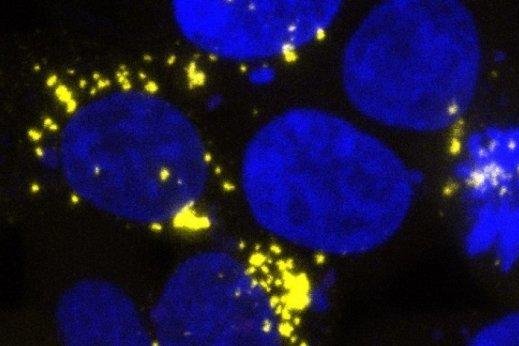Alzheimer's is brought on by the accumulation of amyloid plaques and tau
tangles in the brain, which is ultimately followed by cognitive decline
and dementia. Photo by Prusiner lab/USCF Institute for Neurodegenerative Diseases
May 2 (UPI) -- Two brain proteins linked to Alzheimer's disease may act as self-propagating prions that cause development of the condition, researchers say.
Researchers have found the two proteins spread like an infection, and report that elevated levels of amyloid beta and tau prion activity were found in the brains of younger patients who died from Alzheimer's disease, according to a study published Wednesday in Science Transitional Medicine.
Particularly, they found patients who died of Alzheimer's at an average age of 40 had 32 times higher levels of tau prions in their brains than a 90-year-old person who also died of the disease.
Prions are misshapen forms of a protein that can go on to infect and misshape similar proteins.
"I believe this shows beyond a shadow of a doubt that amyloid beta and tau are both prions, and that Alzheimer's disease is a double-prion disorder in which these two rogue proteins together destroy the brain," Stanley Prusiner, a researcher at University of California at San Francisco and study senior author, said in a news release.
"The fact that prion levels also appear linked to patient longevity should change how we think about the way forward for developing treatments for the disease. We need a sea change in Alzheimer's disease research, and that is what this paper does. This paper might catalyze a major change in Alzheimer's disease research," he said.
Alzheimer's is brought on by the accumulation of amyloid plaques and tau tangles in the brain, which is ultimately followed by cognitive decline and dementia.
Unsuccessful past attempts to treat the disease involved removing those proteins from the brain.
Researchers say the finding now gives researchers more insight into the role of amyloid and tau prions in Alzheimer's development, and hopefully more effective ways to treat the disease.
"We have recently seen many seemingly promising Alzheimer's therapies fail in clinical trials, leading some to speculate that we have been targeting the wrong proteins," said Carlo Condello, a researcher at UCSF and study co-lead author. "But what if we just haven't been designing drugs against the distinctive prion forms of these proteins that actually cause disease?"
"Now that we can effectively measure the prion forms of amyloid and tau, there's hope that we can develop drugs that either prevent them from forming or spreading or help the brain clear them before they cause damage," Condello added.















